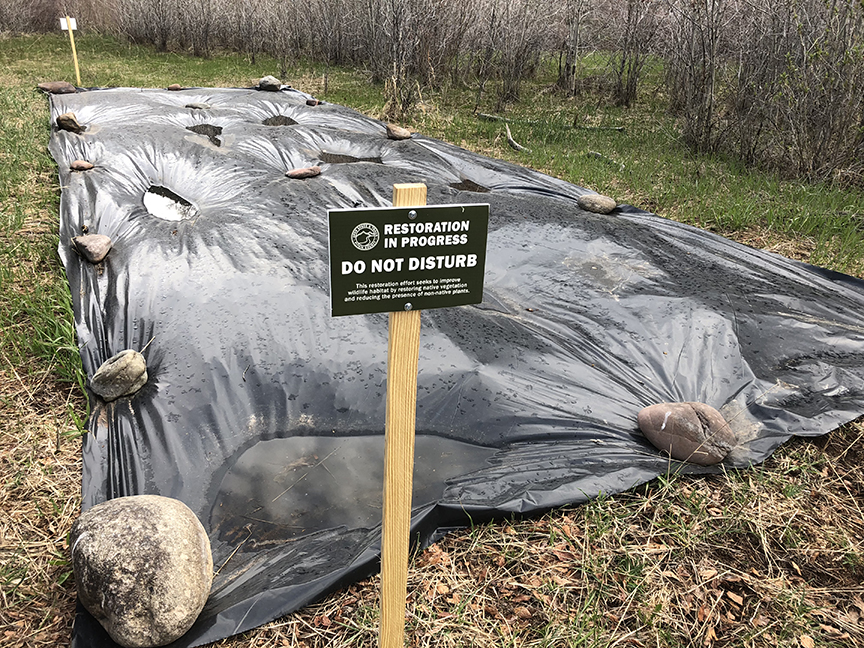Battling weeds on open spaces

Weeds aren’t just the scourge of backyard gardeners, groundskeepers and farmers. They grow on open spaces, too.
Dealing with them in an effective and environmentally sensitive manner whenever and where ever possible isn’t just an admirable goal, it’s the focus of a couple of experimental initiatives at Pitkin County’s Lazy Glen Open Space. For one trial, Open Space and Trails has established test plots to try a technique often used on small farms – covering areas with tarps to reduce the vigor of non-native grasses and weeds. The hope is that it will kill or set back the growth of the plants underneath, preparing the plot to be reseeded with native grasses, forbs and shrubs.
It works like this: The black tarp creates a warm, moist environment which quickly kills established weeds and encourages rapid weed seed germination. The newly emerged weeds then face a dark, suffocating environment in which they quickly die. The lack of sunlight and high temperatures beneath the black tarp take a toll on perennial grasses, as well. Meanwhile, darkness-loving earthworms will come to the surface, effectively tilling the soil as they work their way upward. The worms and other beneficial organisms, unharmed by the heat, also start decomposing the organic matter.
Success at Lazy Glen could lead to applications on various Pitkin County open space properties. Many tracts appear to be scenic expanses of greenery, but close inspection reveals the impact of previous ranching activities. Dominant grasses are often perennial, non-native species, such as smooth brome (Bromus inermis), that were geared for livestock, but crowded out native vegetation.
Also at Lazy Glen, Open Space and Trails is eager to examine the initial results of an effort to attack bindweed (Convovulus arvensis), one of the most widespread and difficult-to-manage weeds in the United States. Bindweed thrives in arid Western states and can grow where other plants cannot. It is nearly impossible to treat with herbicide when it exists in areas with other, desirable vegetation.
Last summer, Open Space and Trails applied Aceria malherbae, a microscopic mite, as a biological control agent for field bindweed in a plot at Lazy Glen. The mite feeds only on bindweed and closely related wild morning glories. It requires bindweed to survive but does not damage other plant species.
According to the Colorado State University Cooperative Extension, the mite feeding on bindweed causes the formation of gall-like growth of plant leaves. The leaves of infested plants are thickened and have a fuzzy texture. Mowing stimulates the plants and distributes the mites while giving them more to feed on. As an added plus, plant material containing the mites can be harvested and used to introduce the mites to other areas.
The mites aren’t a quick fix for bindweed. Control of the weed over a large area can take years, according to the Extension, but anyone who has ever waged war with bindweed understands the thrill of potential victory, no matter how long it takes.
– By Pitkin County Open Space and Trails
